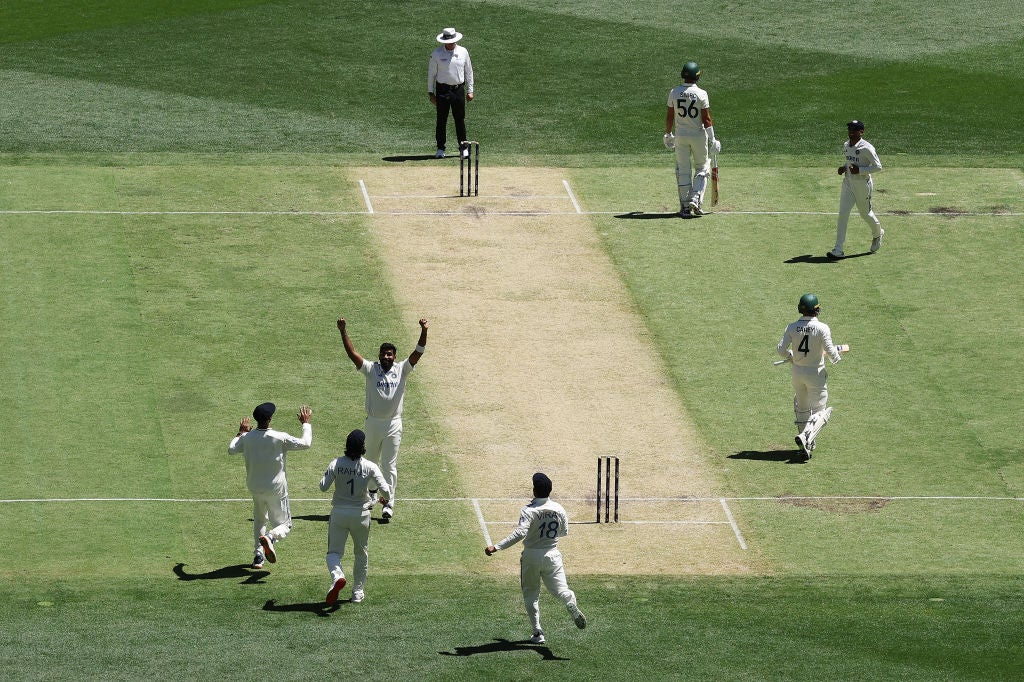“The tour is only a matter of hours old, but the wry thought occurs to me that reputations will almost certainly be destroyed in the next few months.” The pessimistic, pithy aside of Geoffrey Boycott in his chronicles of England’s 1981 tour of the West Indies, Life in the Fast Lane, serves as a useful guide to the challenges of an overseas Test series. Virtually since Test cricket began, it has been easy for touring players to take a defeatist view – making their way by sea or, latterly, air to far-flung lands, many a cynical travelling international cricketer has known they are on little more than a hiding to nothing.
For historically, the odds were stacked vastly in favour of the hosting teams. Be it friendly umpires, knowledge of conditions or merely the comforts of home, only twice in Test history have visiting sides won more than 40 percent of their matches across a calendar year.
If the first of these, 2021, can partly be explained by the peculiarities of a pandemic, the fact that 2024 is the other requires deeper examination. For something strange is happening. In this World Test Championship cycle, Australia have swept a series in New Zealand. New Zealand have done likewise in India. India won in South Africa. South Africa won in Bangladesh. Bangladesh won in Pakistan. Pakistan won in Sri Lanka. Sri Lanka upset England at The Oval; the West Indies stunned Australia in Brisbane.

These would not seem to be bugs in the system but a sizeable shift in the patterns of an age-old game. While great teams of the past (Lloyd’s West Indies, Waugh and Ponting’s Australia) have been exceptions that prove the rule. These are teams in varying states and varied conditions nonetheless disproving the adages of sustained success away from home being close to impossible.
Highest percentage of away wins in Test cricket by calendar year
| Year | Tests | Away wins | Away defeats | Draws | Away win percentage | Draw percentage |
|---|---|---|---|---|---|---|
|
2024 |
41 |
18 |
22 |
1 |
43.9% |
2.4% |
| 2021 | 41 | 18 | 16 | 7 | 43.9% | 17.1% |
| 1995 | 40 | 15 | 13 | 12 | 37.5% | 30.0% |
| 2004 | 51 | 19 | 21 | 11 | 37.3% | 21.6% |
| 2011 | 36 | 13 | 13 | 10 | 36.1% | 27.8% |
| 2010 | 39 | 14 | 16 | 9 | 35.9% | 23.1% |
| 2000 | 46 | 16 | 18 | 12 | 34.8% | 26.1% |
| 2008 | 47 | 16 | 20 | 11 | 34.0% | 23.4% |
| 2016 | 44 | 14 | 23 | 7 | 31.8% | 15.9% |
| 2012 | 39 | 12 | 17 | 10 | 30.8% | 25.6% |
Data via Wisden.com
So what is going on? Well, perhaps it is worth first considering the other statistical quirk that makes 2024 an outlier. An excellent interrogation of the data by the Wisden Cricket Weekly podcast found that this year is the annum with the lowest average bowling strike rate since 1907. Basically, batters have never found it harder to occupy the crease.
It reflects a statistical decline in batting standards. Since 2018 — of those with a significant sample size, with apologies to Yashasvi Jaiswal, Harry Brook and Kamindu Mendis — only Kane Williamson averages more than 50 with the bat in Test cricket, with Joe Root and Steve Smith just below the mark. In the comparative period between 2011 and 2017, 12 batters held averages in the 50s or higher.
While some ex-professionals would suggest that the predominance of white-ball cricket has led to less secure defensive techniques, more telling, perhaps, is the devaluing of the draw. Brought about in part by the launch of a World Test Championship that gives little reward to teams sharing the spoils, captains have also realised that result cricket is generally more entertaining. Matches rarely extend into the final session on day five, if they make it that far at all. Faster scoring rates mean big totals can still be made while allowing 40 wickets to fall; more bowler-friendly pitches have also played a part.

Bold calls or approaches can bring both sides into the game – take Ben Stokes declaring in Mount Maunganui last year, or India’s frankly absurd 285/9 off 35 overs against Bangladesh in Kanpur in September. Some work, some don’t, but the fact there has just been a single drawn Test in 2024 shows that virtually every game now ends with a winner and a loser.
So-called result pitches also aid the overall competitiveness of a format in which some nations are struggling for consistent cricket. Even the best batters generally require time in the middle to refine and hone their game, but spicier surfaces can level the playing field. Countries like the West Indies and South Africa are battling to find consistent run-makers but continue to produce exceptional fast bowlers who can engineer wins when circumstances and conditions allow.
The proliferation of T20 leagues has also made an impact. While tales like that of Shamar Joseph show there is still a place for a bolt from the blue, even a number of nascent Test players now have familiarity with both conditions and opposition from their experiences on the franchise circuit. While unorthodoxy can still be beneficial, vast scouting networks and granular data analysis mean that players, if they wish to be, can be better prepared than ever for the challenges they will face overseas.

The crowding of the calendar has had a knock-on effect, too, in reducing the number of long series played. Only India, England and Australia regularly contest five-match encounters; financial realities of a sometimes spectator-less sport mean the rest have to be content playing just two or three Tests at a time. While this is a shame, the drawn-out tours of the past would be onerous – one only has to look how England’s have frayed towards the end of winless series Down Under since 2010/11 to see the toll it can take.
A shorter series perhaps makes teams feel more up for the fight. With fewer warm-up fixtures and top Test players involved in less and less first-class cricket, hosts can also be caught cold – England’s first Test win in Hyderabad in January and India’s triumph in Perth last week are two fine victories that challenge the thought that it takes time to adjust to vastly different conditions.

Is this year an aberration or indicative of a future where home advantage is less pivotal? There may be hope that it is latter. Test cricket is in need of spectator growth if it is to persist and prosper, and there is no doubt that the red-ball game is more fun if both sides genuinely have a chance more often. That five teams remain in the mix to make next summer’s World Test Championship final is proof of a format perhaps more unpredictable than ever.
